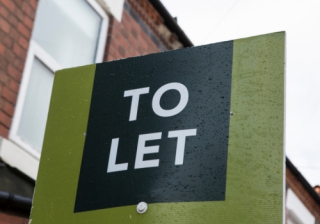
"When councillors in Oxford proposed to install six traffic filters as part of an initiative to encourage active travel, they were criticised as being ‘power mad’ and ‘communist’, leading to thousands of people protesting on the streets"
Three years ago, the advent of Covid lockdowns led to an unpredicted need for communities to adapt and become more ‘resilient’ in the way people access services and spaces.
Compounded by the working-from-home revolution that followed, ‘local’ and ‘hyper-local’ communities took on greater importance and the concept of the 15-minute city’ came to the fore.
Despite a return to more familiar living and working patterns, the principles of the 15-minute city concept - neighbourliness, support for local businesses, and sustainable travel modes – have become central to many Local Plans. So, do they remain relevant as guiding principles for urban development today?
What is a 15-Minute City?
Developing the idea in 2016, four years before the Covid lockdowns, Professor Carlos Moreno of the Paris-Sorbonne University proposed the 15-minute City as a panacea to address the multiple problems of congestion, poor mental health, high emissions, and a failing sense of community.
In essence, the concept introduces the idea of ‘living locally’ with new communities located within a 15-minute walk or cycle ride of the collection of amenities people need to live, work and play. This is a relatively harmless concept according to most planning professionals, and recent YouGov polling confirms that 62% of the British public is in favour.
However, recently critics of the concept have started to voice their feelings. When councillors in Oxford proposed to install six traffic filters as part of an initiative to encourage active travel, they were criticised as being ‘power mad’ and ‘communist’, leading to thousands of people protesting on the streets.
A Conservative MP demanded a parliamentary debate on what was described as an ‘international socialist concept’, on the basis that the installation of traffic filters to create Low Traffic Neighbourhoods ‘cost our personal freedom’.
Aside from the Oxford experiment, the 15-minute City concept is flourishing globally. In Paris, Mayor Anne Hidalgo’s ‘ville du quart d’heure’ has seen roads closed to vehicles to prioritise pedestrians, investment in public transport, improvements to bike lanes, and bike-sharing programmes, in an effort to create self-sufficient communities within the arrondissements of the city.
In Barcelona, the ‘superblock’ has taken off, while in Copenhagen, the neighbourhood of Nordhavnen is aspiring to become a 5-minute neighbourhood.
There are several further examples in the UK: Winchester City Council’s recent Strategic Priorities and Issues consultation has highlighted the importance of the 15-minute city concept in improving sustainability and as part of a solution to the climate emergency.
Similarly, Ipswich is planned to become the first ‘15-minute town’ as part of a post-Covid revitalisation of the town centre.
Bristol, Sheffield and Canterbury are considering implementing 15-minute city schemes. Both Hampshire and Surrey County Councils have also adopted guidance which relates to a 20-minute neighbourhood and the Town and Country Planning Association has published detailed guidance on doing so.
How did we end up with protests on the streets?
Some critics within the planning and development industry argue that a 15-minute city can be suffocating and actually increase social issues such as isolation. The discussion has been distracted by misinformed arguments that the 15-minute City concept will result in authorities using pandemic-style lockdowns to restrict people’s movement in an attempt to stop climate change.
When Oxfordshire County Council’s proposal to reduce traffic congestion was announced late last year, some groups mistakenly linked the effort to Oxford City Council’s separate 15-minute city plan and the false claim that residents were set to be confined to a 15-minute radius of their homes under surveillance.
In reality, there is no proposed lockdown. Oxfordshire County Council simply proposes to install six traffic filters as part of a health-promoting plan to encourage active travel. The Council’s website states that it seeks to reduce congestion in the city centre by targeting ‘unnecessary journeys by cars’ by placing time restrictions on six roads in the city.
Without a permit, cars would not be able to drive through the traffic filters whilst they are in operation and number plate recognition cameras will monitor and enforce the restrictions.
It would have been interesting to understand reactions to the proposed 15-minute city idea in Oxford City Council’s emerging Local Plan if the traffic filter proposals were not proposed at the same time.
Would there have been such strong feelings if it was not assumed that there would be limitations on car movement?
It remains to be seen how the protests in Oxford will impact the concept elsewhere. Despite the many local authorities actively putting it into action, significant dissatisfaction has not occurred other than in Oxford.
Furthermore, it should be noted that while implementation remains fraught with challenges in existing communities, bringing forward new settlements and urban extensions on this basis, matched with good urban planning to improve public transport and support local businesses, is likely to see considerable success.
Increasingly, new communities are required to encourage active travel, as is illustrated by the announcement that from June, Active Travel England will become a statutory consultee on all developments of over 150 residential units.
However, there remain challenges to implementing the concept in practice. How do you ensure that new developments interact with existing neighbourhoods if all services and facilities are within a 15-minute walk/cycle?
And how do you ensure that some level of development occurs within rural areas which are not able to access services/facilities within the required 15 minutes? How can you effectively bring forward a 15-minute City in an existing settlement which lacks the requisite access to services?
Certainly, the progress of emerging Local Plans which incorporate these principles will be interesting to watch. There seems to be a very clear lesson learnt from the case in Oxford, regarding the ease with which the concept can be misunderstood, which must be addressed if the concept is to succeed.





